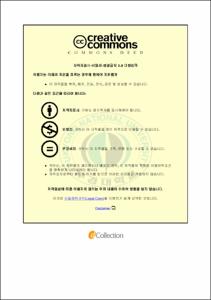알루미늄 합금도체에 미치는 미세첨가 원소의 영향
- Alternative Title
- Effect of the Microalloying Elements on the Aluminum alloys for Conductor
- Abstract
- The need of electrical power was increased just 10% annually because of high density of population and elevation of life level and development of industry. So capacity enlargement of overhead conductor was needed. “STACIR(Super Thermal Resistant Aluminum alloy Conductors, Invar Reinforced)” is the best method for capacity enlargement of overhead conductor. Electric transmission of STACIR includes “Heat treatment” account for 30% of total costs. The purpose of this study is to develop “NHTSTAl(Non Heat Treatment Super Thermal resistant Aluminum alloy)”. The influence of hydrofluoric acid etchants on the microstructural characteristics were observed by using OM, TEM and EPMA. The influence of Sc, Zr and MM additions were observed by tensile strength, conductivity and heat resistant rate. When Zr or Sc add to EC Al, Conductivity was decreased. Best “NHTSTAl” alloy was “EC Al-0.01wt%Zr-0.01wt%Sc-0.01wt%MM-0.001wt%Y”. Properties of this alloy were tensile strength 16.9kgf/mm2, conductivity 60.1%, heat resistant rate 92.2%.
- Issued Date
- 2010
- Awarded Date
- 2010. 2
- Type
- Dissertation
- Keyword
- Aluminum alloy STACIR conductor
- Publisher
- 부경대학교
- Alternative Author(s)
- Wang, In Su
- Affiliation
- 부경대학교 대학원
- Department
- 대학원 소재프로세스공학과
- Advisor
- 김성규
- Table Of Contents
- 1. 서론……………………………………………………………………………1
1.1 연구목적.......................................................................................1
1.2 기술개발의 필요성.......................................................................5
2. 실험방법..........................................................................................11
3. 실험결과 및 고찰............................................................................12
3.1 제조공정에 따른 특성 변화…………………………………………12
3.2 미세조직 관찰............................................................................14
3.2.1 압연조건에 따른 미세조직 변화............................................14
3.2.2 합금원소에 따른 미세조직 변화............................................17
3.3 EPMA 분석................................................................................22
3.4 TEM 분석..................................................................................24
3.4.1 첨가원소에 의한 특성 변화...................................................24
3.5 도전율…………………………………………………………………..41
3.6 인장강도 ………………………………………………………………44
3.7 내열성…………………………………………………………………..47
4. 결론………………………………………………………………………….51
5. 참고문헌…………………………………………………………………….52
- Degree
- Master
- Files in This Item:
-
-
Download
 알루미늄 합금도체에 미치는 미세첨가 원소의 영향.pdf
기타 데이터 / 1.96 MB / Adobe PDF
알루미늄 합금도체에 미치는 미세첨가 원소의 영향.pdf
기타 데이터 / 1.96 MB / Adobe PDF
-
Items in Repository are protected by copyright, with all rights reserved, unless otherwise indicated.